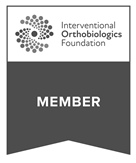All eyes were on the US Olympic Swim Team during the 2016 Summer Olympic Games, but not just because of their awesome performance in the pool. It was impossible not to notice the round reddish-purple markings on the backs, arms and shoulders of several team members as they awaited the start signal, or splashed onto the pool deck. The marks, it turns out, are from cupping, an ancient Chinese therapy used for a plethora of conditions.

Although clinical studies are scarce, those that have been published indicate that cupping may provide both long- and short-term benefits for tissue recovery and pain reduction. Many athletes opt for cupping as a noninvasive and drug-free alternative therapy for managing muscle pain, reducing fatigue and speeding recovery.
Cupping therapy works by expanding the capillaries and promoting blood flow into and out of the affected tissues. During a cupping session, the patient lies face-down on a cupping massage table, as cups are strategically placed on the back, arms and/or shoulders, depending on the targeted tissues.

After placement, the cups are heated until they create a suction vacuum effect. Cupping targets skin and deep tissues to relieve pain, break up scar tissue and relax myofascial and connective tissues. Unlike massage, which applies pressure to targeted areas, cupping draws pressure away from affected tissues.
During dry cupping, also known as fire cupping, a trained clinician arranges cups on the patient’s back and then carefully applies heat. The heated cups create a vacuum seal, and are left in place for five to 15 minutes as they cool. The vacuum pulls the skin into the heated cups, stretching underlying tissue and increasing blood flow to facilitate healing.
Wet cupping, a more invasive treatment, is used in certain parts of the Middle East. During the procedure, a tiny incision is made in the patient’s skin before the cup is applied. Instead of heating the cups, the clinician uses a pump to remove a small amount of the patient’s blood. The technique is said to improve energy and remove toxins.
Dry cupping therapy is generally considered safe when performed by a qualified health professional. Some patients feel a pinching sensation during the cupping procedure, and it can leave skin discolorations that fade after several days. In extremely rare cases, skin infections have been reported, but infection is unlikely to develop when cupping therapy is performed under sanitary conditions and precautions are taken to prevent it.
Dry cupping is a safe and non-invasive treatment that most people find soothing and relaxing. However, cupping is not for everyone.
Cupping therapy is not advised If you:Note that cupping therapy may leave discolored marks on the surface of your skin that can remain for up to two weeks.

To enjoy the benefits of safe and effective cupping treatment in NYC, contact NYDNRehab. Our trained practitioners will perform an individualized cupping session geared to your personal needs. At NYDNRehab, we continually embrace innovative therapies and new technologies to enhance your healthy active lifestyle.

Dr. Kalika is currently a certified member of:
American Institute of Ultrasound Medicine

Active member of ISMST
International Society of Extra Corporeal Shockwave Therapy
Active member of GCMAS
Gait and Clinical Movement Analysis Society
Active member of NASS
North American Spine Society
Active member of IADMS
International Association of Dance Medicine and Science
Active member of Virtual Rehabilitation Society
Active member of ASRA
American Society of Regional Anesthesia and Pain Medicine
American Academy
Association of Orthopedic Medicine

Active member of Interventional Orthobiologics Foundation
Dr. Lev Kalika is a world-recognized expert in musculoskeletal medicine. with 20+ years of clinical experience in diagnostic musculoskeletal ultrasonography, rehabilitative sports medicine and conservative orthopedics. In addition to operating his clinical practice in Manhattan, he regularly publishes peer-reviewed research on ultrasound-guided therapies and procedures. He serves as a peer reviewer for Springer Nature.
Dr. Kalika is an esteemed member of multiple professional organizations, including: